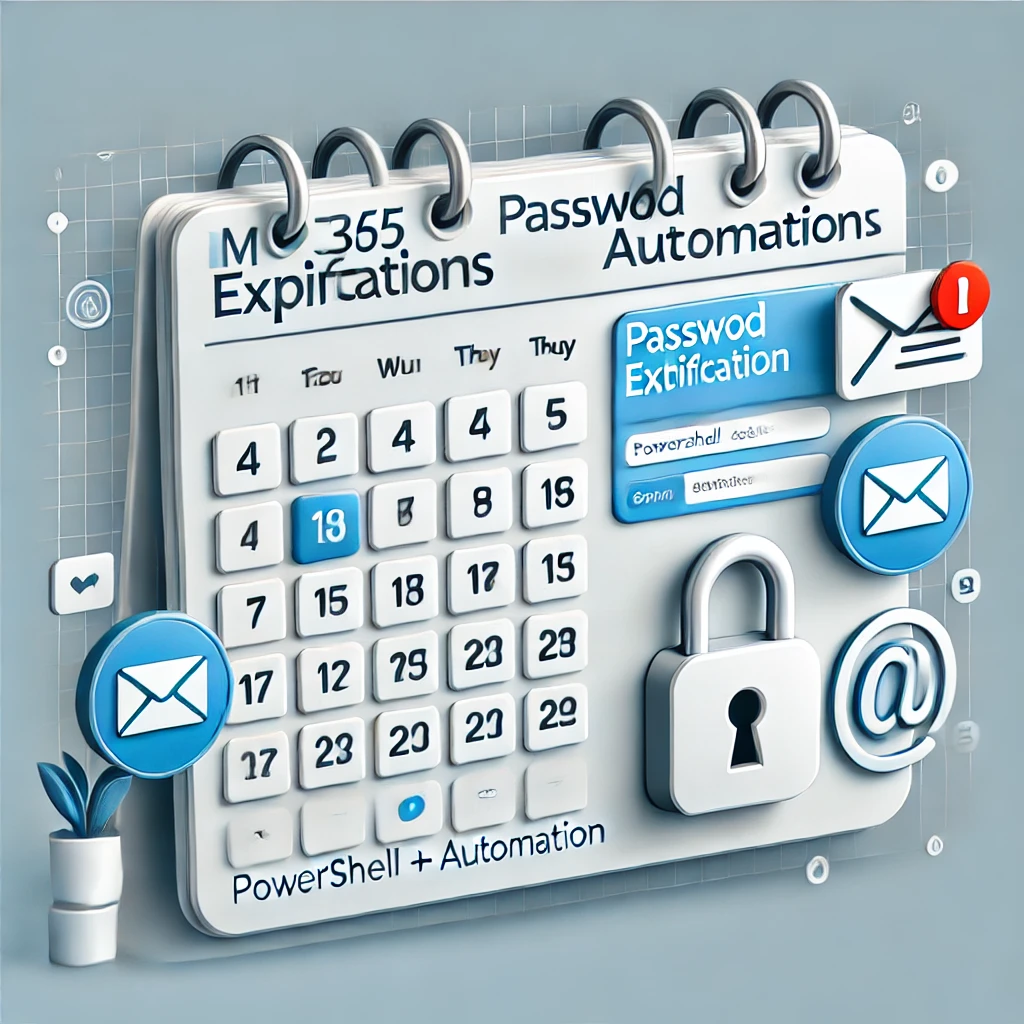Automatically Notify Microsoft 365 Users of Upcoming Password Expiration Using PowerShell & Azure Automation
 Marco Notarrigo
Marco Notarrigo
Ensuring your Microsoft 365 users are aware of password expiration is critical for both security and productivity. Without proper notification, users can get locked out unexpectedly, causing support overhead and frustration. While Microsoft 365 doesn't send these notifications by default, we can fix that.
In this guide, you'll learn how to automate password expiration checks and send timely email alerts using:
PowerShell
Microsoft Graph API
Azure Automation (or local execution)
📊 What This Script Does
Connects to Microsoft Graph using App Registration
Retrieves users from a dynamic Microsoft 365 group
Checks their last password change date
Calculates days until expiration (based on org policy)
Sends custom email notifications for users whose passwords will expire soon (e.g., within 7 days)
💡 Note: The script assumes all users in the dynamic group have passwords that do expire (e.g., users logging in via Microsoft Entra ID Join). Therefore, it does not need to filter out accounts with
PasswordNeverExpires, since the group logic already excludes them.
📄 Pre-Requisites
1. App Registration in Entra ID
Create an app in Entra ID > App Registrations
Assign API Permissions:
User.Read.AllGroup.Read.AllMail.Send
Grant Admin Consent
Generate a client secret and note the Application (Client) ID and Directory (Tenant) ID
2. Licensed Sender Mailbox
Ensure your app is authorized to send mail on behalf of a licensed user, such as noreply@yourdomain.com.
3. Optional: Azure Automation Setup
Store sensitive variables as Automation Variables:
ClientIDClientSecretTenantIDGroupIdSenderEmailPasswordExpirationDays
💡 Features of the Script
Can run locally or inside Azure Automation
Smart logging via
Write-Log(supports verbosity and silent automation)UPN masking for privacy in logs
Error handling and graceful exits
👺 Masked Logging Example
User: jo*****@domain.com | Days remaining: 5
Sending alert...
Email sent to jo*****@domain.com
✎ Script Usage (Locally or in Azure)
⚡ Local Test Example:
.\Notify-M365PasswordExpiry.ps1 `
-ClientId "xxxxxxxx-xxxx-xxxx-xxxx-xxxxxxxxxxxx" `
-ClientSecret "your-secret" `
-TenantId "xxxxxxxx-xxxx-xxxx-xxxx-xxxxxxxxxxxx" `
-GroupId "xxxxxxxx-xxxx-xxxx-xxxx-xxxxxxxxxxxx" `
-PasswordExpirationDays 45 `
-SenderEmail "noreply@yourdomain.com" `
-UseLocalParameters
🚀 Scheduled in Azure Automation:
Import the script as a Runbook
Set up a daily schedule
Securely store secrets using Automation Variables
🔧 Under the Hood (Logic Breakdown)
Get access token using
client_credentialsConnect to Microsoft Graph
Fetch users from the target group
For each user:
Get
LastPasswordChangeDateTimeAdd org-defined expiration window (e.g., 45 days)
Calculate remaining days
If within 7 days, send email
🧩 Key Functions Explained
🔐 Get-GraphAccessToken
Authenticates using client credentials and retrieves a Microsoft Graph API access token.
🌐 Connect-ToGraph
Uses the Microsoft Graph PowerShell SDK to establish a session for additional operations like retrieving user data.
👥 Get-GroupUsers
Fetches members from the specified dynamic group by Group ID.
🔍 Get-UserDetails
Retrieves DisplayName, UserPrincipalName, and LastPasswordChangeDateTime for each user.
✉ Send-EmailNotification
Sends a formatted HTML email to users using Microsoft Graph's sendMail endpoint. The message content is fully customizable based on your organization’s communication style.
🔗 GitHub Repository
You can find the full script and future updates here: 🔗 GitHub – Notify-M365PasswordExpiry.ps1
📈 Benefits
Reduces help desk tickets
Keeps users informed and proactive
Flexible: can run in the cloud or on-prem
Secure: supports masked logging and stored secrets
🌐 What You Can Improve Next
Integrate Microsoft Teams alerts
Write logs to Azure Storage or Log Analytics
Localize email messages based on user locale (optional – currently defaulted to English)
🚀 Final Thoughts
This script gives you full control over Microsoft 365 password expiration reminders, with enterprise-grade flexibility. Whether you run it in Azure Automation or locally, it's ready to scale and secure.
Have questions or want enhancements? Let's build on this together! ✨
Subscribe to my newsletter
Read articles from Marco Notarrigo directly inside your inbox. Subscribe to the newsletter, and don't miss out.
Written by

Marco Notarrigo
Marco Notarrigo
My name is Marco Notarrigo and I am a System Engineer with a passion for Technology, Math and Computer Science. Since I was a kid, I began programming on 8-bit computers such as the Apple II and the Commodore 64. As my passion for technology and computer science has grown over the years, it has turned into a job for me. Over the last years, I have gained experience in DevOps, Security and Cloud Computing, making me well-versed in the principles and practices of these critical fields. Therefore, I want to share this passion with all of you who follow me and hope to inspire you to pursue your interests.